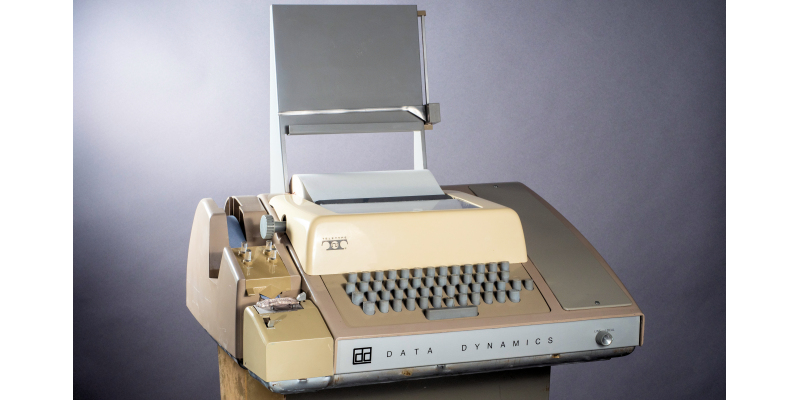
ASR 33 Teletype
To be able to interact with a computer we are used to full colour high resolution display - things were much different 40 years ago. We had to use mechanical typewriters, called Teletypes.
The Teletype Model 33 is an electromechanical teleprinter designed for light-duty office use. It is less rugged and cost less than earlier Teletype machines. The Teletype Corporation introduced the Model 33 as a commercial product in 1963 after being originally designed for the United States Navy.
Model 33 ASR, (Automatic Send and Receive), has a built-in eight-hole punched tape reader and tape punch. The Department of Computer Science at York had at least one of these machines.
You may not have seen one of these before, but if you ever watched Grandstand for Final Score you will have heard it. The distinctive sound of the Teletype delivering the scores as they came in is evocative of the 1970s, 80s and even 1990s.
Related links
The Model 33 was one of the first products to employ the newly-standardized ASCII code, which was first published in 1963. A companion Model 32 used the older, more-established five-bit Baudot code. Because of its low price and ASCII-compatibility, the Model 33 was widely used with early minicomputers, and the large numbers of the teleprinter which were sold strongly influenced several de facto standards which developed during the 1960s and 1970s.
The upper-case-only limitation of the widely-used Teletype Model 33 constrained many early computer languages and systems to communicate in ALL CAPS, establishing an association of this text stylization with early computing technology in general.
The Teletype Model 33 series was influential in the development and interpretation of ASCII code characters. In particular, the Teletype Model 33 machine assignments for codes 17 (Control-Q, DC1, also known as XON) and 19 (Control-S, DC3, also known as XOFF) became de facto standards.
The programming language BASIC was designed to be written and edited on a low-speed Teletype Model 33. The slow speed of the Teletype Model 33 influenced the user interface of minicomputer operating systems, including UNIX.
The serial ports in Unix and Linux are named "/dev/tty...", which is short for "Teletype".
In 1971, Ray Tomlinson chose the "@" symbol on his Teletype Model 33 ASR keyboard for use in network email addresses.
A Teletype Model 33 provided Bill Gates' first computing experience.